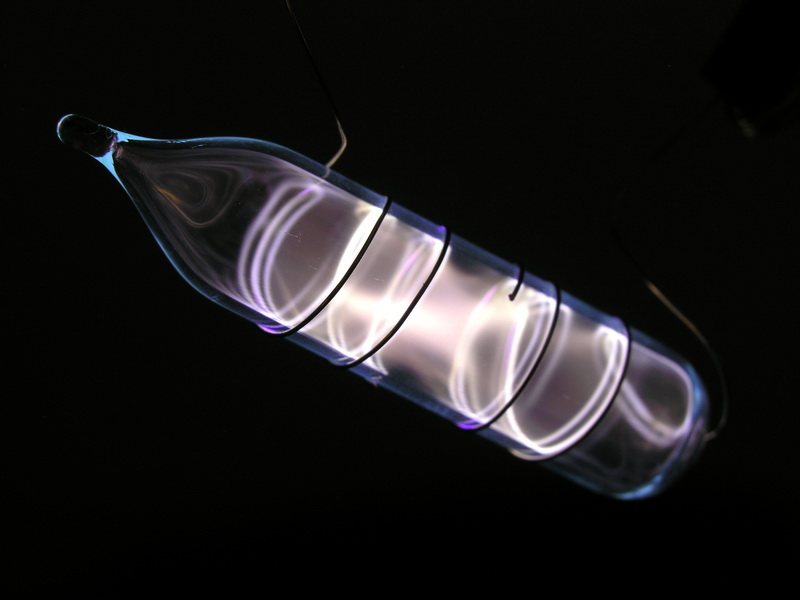
 In food packaging industry, the noble gas is used in sterilization of fluids. The element is used in halogen-sealed beam headlights to enable insertion of thinner and long-lasting filaments for a greater light output. It is mixed with argon and filled in energy-saving fluorescent light bulbs. Kr is used in the flash lamps of high-speed cameras. It finally was in a story aptly titled “Superman Returns to Krypton”, whose caption reads: “Superman has some unfinished business-the one remaining particle of Kryptonite on earth!” ( Superman, issue no.Krypton Orbital Diagram What are the Common Uses of Krypton Kryptonite’s first printed attestation is officially found in a 1945 newspaper snippet commenting the latest episodes of the Superman radio show, but it took an additional four years for it to be mentioned in the comic strip. (From the 1943 script by George Lowther, quoted in Glen Weldon, Superman: The Unauthorized Biography.) The introduction of the substance in the storyline provided the hero with an Achilles’ heel showing obvious narrative benefits:Īs came within five feet of the mass of metal, which glowed like a green diamond, he suddenly felt weak, as if all his strength had been drained from him… Here was an enemy far more deadly than anything human. The first attestation of kryptonite is not to be found in a written text, but in a June 1943 sound recording of the Adventures of Superman radio series, starring Bud Collyer as Superman/Clark Kent. The suffix -ite denotes a mineral, and may recall kryptonite’s earliest status in the story as a meteorite. English words crypt and cryptic may also have played a role. It can reasonably be linked to the name of the noble gas krypton (from the Ancient Greek kruptos, meaning “hidden, secret, secluded”). The exact source of inspiration for the name Krypton was not clearly explained by Superman’s creators Jerry Siegel and Joe Shuster, or any of their followers. Therefore, since 1960, kryptonite is used, often with a hint of humour, to mean a weakness affecting someone’s strength, ability to think clearly, or resistance to temptation. Superman avoids all contact with the substance, as it neutralizes his powers. Kryptonite was first described in the fictional world of the superhero Superman as a radioactive element from the planet Krypton (hence the element’s name), synthesized as the result of the planet’s radioactive explosion. The Greek etymon kruptos can also be found in a twentieth-century neologism from the world of superhero comics, kryptonite.
In food packaging industry, the noble gas is used in sterilization of fluids. The element is used in halogen-sealed beam headlights to enable insertion of thinner and long-lasting filaments for a greater light output. It is mixed with argon and filled in energy-saving fluorescent light bulbs. Kr is used in the flash lamps of high-speed cameras. It finally was in a story aptly titled “Superman Returns to Krypton”, whose caption reads: “Superman has some unfinished business-the one remaining particle of Kryptonite on earth!” ( Superman, issue no.Krypton Orbital Diagram What are the Common Uses of Krypton Kryptonite’s first printed attestation is officially found in a 1945 newspaper snippet commenting the latest episodes of the Superman radio show, but it took an additional four years for it to be mentioned in the comic strip. (From the 1943 script by George Lowther, quoted in Glen Weldon, Superman: The Unauthorized Biography.) The introduction of the substance in the storyline provided the hero with an Achilles’ heel showing obvious narrative benefits:Īs came within five feet of the mass of metal, which glowed like a green diamond, he suddenly felt weak, as if all his strength had been drained from him… Here was an enemy far more deadly than anything human. The first attestation of kryptonite is not to be found in a written text, but in a June 1943 sound recording of the Adventures of Superman radio series, starring Bud Collyer as Superman/Clark Kent. The suffix -ite denotes a mineral, and may recall kryptonite’s earliest status in the story as a meteorite. English words crypt and cryptic may also have played a role. It can reasonably be linked to the name of the noble gas krypton (from the Ancient Greek kruptos, meaning “hidden, secret, secluded”). The exact source of inspiration for the name Krypton was not clearly explained by Superman’s creators Jerry Siegel and Joe Shuster, or any of their followers. Therefore, since 1960, kryptonite is used, often with a hint of humour, to mean a weakness affecting someone’s strength, ability to think clearly, or resistance to temptation. Superman avoids all contact with the substance, as it neutralizes his powers. Kryptonite was first described in the fictional world of the superhero Superman as a radioactive element from the planet Krypton (hence the element’s name), synthesized as the result of the planet’s radioactive explosion. The Greek etymon kruptos can also be found in a twentieth-century neologism from the world of superhero comics, kryptonite. 
Ramsay’s name choice likely referred to the scarcity of krypton in the Earth’s atmosphere. The Ancient Greek adjective is itself a derivation of kruptein ( κρύπτειν), meaning “to hide”, “cover” or “obscure”. The ending in - on either denotes the neuter singular form of the adjective, krupton ( κρυπτόν), or represents, along with - um, a typical suffixal ending for chemical elements (see, for example, boron, carbon, silicon, argon and radon). Krypton’s modern areas of application include fluorescent lighting, magnetic resonance imaging and computed tomography (CT scans).įor the naming of krypton, Ramsay suggested using the Ancient Greek adjective kruptos ( κρυπτός), meaning “hidden, secret, secluded” (as in cryptology). The chemical elements krypton, neon and xenon were all discovered in 1898 by the Scottish chemist William Ramsay and the English chemist Morris William Travers. It was coined by Swedish chemist Torbern Bergman to refer to the compound NH 3. However, the term ammonia did not appear until 1782 in scientific Latin, and at the turn of the nineteenth century in English. The Latin adjective ammoniacus is a borrowing from the Ancient Greek ammōniakos “relating to Amon”. When the Romans began extracting ammonium chloride from the ground near the temple they named it sal ammoniacus in honour of Amon.


A temple to Amon was built in Siwa, in modern-day western Egypt Ancient Romans would consult its oracle. The cult of Amon became extremely prominent in Ancient Egypt, as Amon came to be identified with the Egyptian creator-sun god Ra. ammoniaĪmon or Amun, meaning “hidden” in Ancient Egyptian, was the name of the Theban god of air and invisibility. In this instalment, we reveal the secrets of its origin, along with the real-life substances ammonia and krypton. Originally coined to describe one of Superman’s few weaknesses, kryptonite has become a highly visible word in the English language. Despite their mysterious roots, each refers to a well-known chemical substance, the most famous of which is the fictional kryptonite. Ammon- and krypto-, roots of this month’s words in question, have a common meaning: “hidden”.








 0 kommentar(er)
0 kommentar(er)
